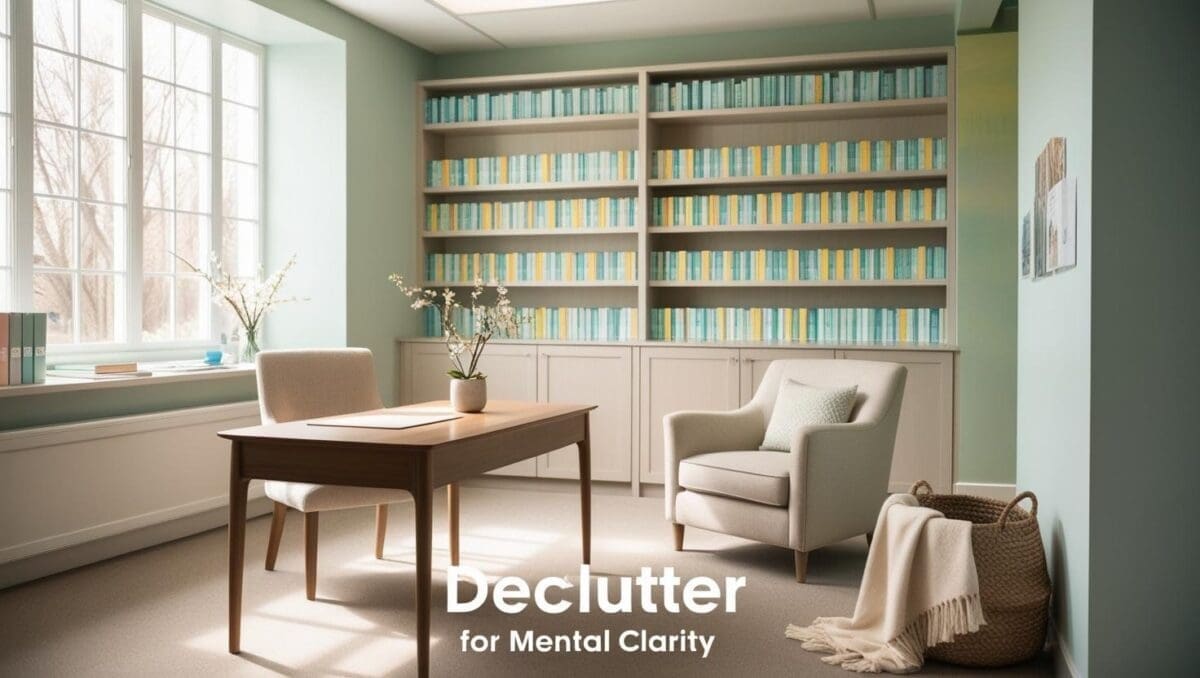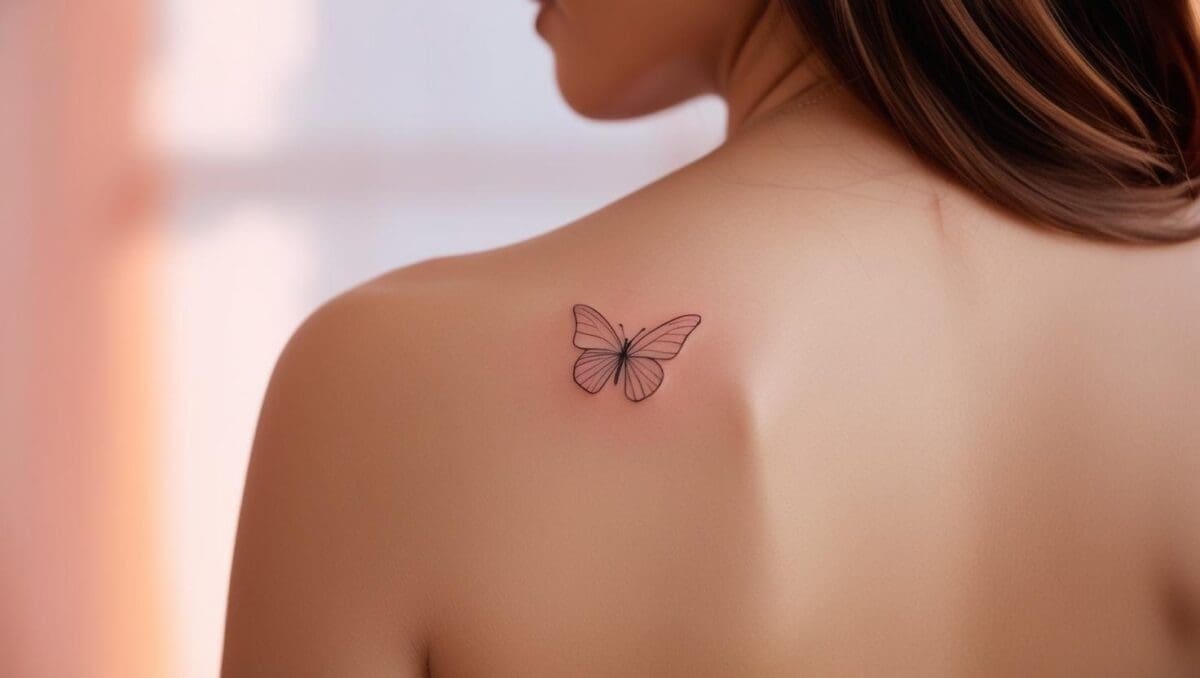When the world outside turns gray and quiet, it’s easy for your energy to fade with it.
But even in the coldest months, your home can hold a gentle kind of life — soft greens, textured leaves, and the earthy scent of calm.
Adding winter plant decor isn’t just about style.
It’s about bringing emotional balance back into your space when nature feels far away.
Plants restore rhythm, presence, and connection — three things anxiety quietly steals first.
🌿 Why Plants Support Emotional Wellbeing
Science confirms what intuition already knows: humans are meant to live close to nature.
When you invite greenery indoors, you’re giving your nervous system the cues it craves to feel grounded and safe.
🧠 Psychology of plants:
- Exposure to greenery lowers heart rate and blood pressure.
- Caring for plants releases dopamine, the reward and motivation chemical.
- Natural textures and colors activate the parasympathetic (rest-and-digest) system.
- Visual patterns in leaves stimulate attention restoration, helping your mind refocus after overstimulation.
Plants aren’t just decorative — they’re emotional companions.
They remind you to breathe, to water, to wait, and to grow.
🌱 The Therapeutic Power of “Tending”
Tending to something living gives structure to slow days and purpose to quiet ones.
In winter, that act becomes emotional medicine.
Even five minutes of watering, pruning, or rearranging your plants can help regulate emotion through mindful repetition and sensory feedback.
You don’t have to meditate — you just need to notice.
💬 Try this mindful tending exercise:
While watering your plants, silently repeat:
“As I care for this, I care for myself.”
🧠 Therapeutic link: The brain interprets nurturing gestures as self-compassion, reinforcing calm through embodied awareness.
🌤 How Plants Affect Mood and Mental Health
When you feel anxious, unfocused, or low, your brain is often overstimulated by screens and artificial light.
Plants restore balance by introducing natural cues that signal safety and rest.
🧠 The Mental Health Benefits of Indoor Plants
- Reduce Anxiety & Depression:
Exposure to green spaces, even indoors, lowers cortisol (stress hormone) and increases serotonin.
Simply viewing plants has been shown to improve mood within minutes. - Increase Focus & Creativity:
Plants trigger the brain’s soft fascination — a state of relaxed attention that enhances creativity and reduces mental fatigue. - Boost Emotional Stability:
Consistent exposure to living greenery stabilizes the nervous system, helping your mood recover from daily stress faster. - Support Connection & Responsibility:
Caring for a plant gives you small, achievable goals — a source of pride, especially during low-motivation seasons. - Reduce Loneliness:
Studies show that people who keep plants describe them as companions. They fill quiet rooms with life and meaning — gentle antidotes to winter isolation.
When everything outside feels dormant, your plants whisper that growth is still happening — slowly, quietly, within reach.
🍃 Air-Cleaning Power: The Hidden Health Benefit
Beyond their beauty, indoor plants improve the physical quality of your home environment.
🌬 How Plants Clean the Air
Plants absorb carbon dioxide and release oxygen, but they also help filter toxins like benzene, formaldehyde, and xylene — common in indoor air from furniture, candles, and cleaners.
NASA’s famous “Clean Air Study” showed that certain houseplants can remove up to 87% of indoor air pollutants within 24 hours.
While one plant won’t purify your entire home, clusters of greenery increase humidity, reduce airborne dust, and support easier breathing.
Better air quality = clearer mind + deeper sleep.
🪴 Top Air-Purifying Plants
- Peace Lily: Removes toxins and adds moisture to dry winter air.
- Snake Plant: Converts CO₂ into oxygen even at night — ideal for bedrooms.
- Spider Plant: Filters out formaldehyde and carbon monoxide.
- English Ivy: Effective against mold spores in humid spaces.
- Areca Palm: Natural humidifier, perfect for dry indoor climates.
🧠 Health link: Oxygen-rich air increases energy and cognitive function, while balanced humidity protects your respiratory system from winter dryness — directly supporting emotional balance.
🌤 2. Choose Mood-Supportive Plants for Winter
Not all plants love the dim light of winter, but some thrive in it — making them perfect for calm, low-maintenance decor.
Best Low-Light Indoor Plants
- Snake Plant: Strong, forgiving, and symbolic of resilience.
- ZZ Plant: Thrives on neglect — reminds you to release perfectionism.
- Pothos: Easy to grow, trailing vines that embody flow and adaptability.
- Peace Lily: Soft white blooms that symbolize serenity.
- Spider Plant: Cheerful and lively — perfect for kids’ or therapy spaces.
🧠 Color psychology note: Green increases serotonin, while natural plant variation creates visual interest that reduces anxiety.
🌼 3. Use Natural Textures to Enhance Calm
The containers and surfaces that hold your plants matter.
They influence how your brain perceives the environment — sharp, sterile materials create subtle tension; soft, organic ones promote comfort.
Ideas:
- Clay or ceramic pots for earthy warmth
- Woven baskets for tactile depth
- Linen or rattan trays for grouping small plants
💬 Pro tip: Use odd-numbered clusters (3 or 5) for visual harmony — your brain prefers asymmetry that mimics nature.
🧠 Sensory insight: Organic textures create “micro-grounding” — soft details that subtly tell your nervous system it’s safe.
🌵 4. Create “Living Corners” of Calm
Cluster plants intentionally instead of scattering them.
Groupings mimic natural ecosystems and help the space feel organic rather than decorated.
Ideas for Plant Corners:
- Reading nook: Snake Plant + small fern on a stool
- Kitchen window: rosemary, thyme, or mint for scent-based calm
- Bedroom: Peace Lily + eucalyptus vase for air purification
🧠 Eco-therapy note: Looking at greenery for even 10 seconds reduces stress response in the amygdala (the brain’s fear center).
🌿 5. Integrate Plants Into Winter Decor
Winter is about warmth and contrast — greens against candlelight, life beside stillness.
Pair your plants with soft seasonal elements.
Ideas:
- Wrap fairy lights around tall plants
- Add pinecones or moss for texture
- Mix evergreens and eucalyptus with soft gold accents
💬 Styling tip: Let your greenery breathe. White space creates calm.
🧠 Sensory balance: Combining organic growth with warm light creates visual calm and emotional safety — two pillars of nervous-system regulation.
🌼 6. Nurture Light — Symbolically and Literally
Plants and humans share a secret: both depend on light for life.
Light Care Rituals:
- Place plants near east- or south-facing windows for natural sunlight.
- Use mirrors to reflect light deeper into your room.
- Add a full-spectrum lamp to mimic daylight for both you and your plants.
🧠 Mood connection: Light exposure boosts serotonin and prevents Seasonal Affective Disorder (SAD).
Each time you reposition your plant toward the sun, you’re practicing self-regulation through environmental awareness.
🍂 7. Add Rituals Around Your Green Space
Your plant area can become a daily grounding ritual — a tiny sanctuary that re-centers you.
Try:
- Water mindfully with calm breathing.
- Observe small growth as a metaphor for progress.
- Practice gratitude: “Thank you for the air you clean and the calm you bring.”
🧠 Why it works: Rituals create continuity, training the brain to associate certain spaces with relaxation and presence.
✨ Final Reflection
Your plants don’t rush. They don’t compete.
They simply grow, rest, and reach for light — a rhythm that mirrors what human healing should look like.
This winter, let your home remind you that life continues quietly.
A small green leaf on a gray morning is a kind of hope — proof that softness can survive the season.
“You don’t have to bloom every day. Sometimes thriving simply means staying rooted.”

About the Author
Hi, I’m Eve, a former school counselor with a master’s degree in School Psychology and a passionate advocate for children and families navigating sensory challenges. As a mom of children with sensory sensitivities, I deeply understand the journey special-needs parents face, and I dedicate myself to researching and sharing practical solutions to help children thrive and feel comfortable in their bodies. My goal is also to empower counselors, therapists, and psychologists with creative strategies and supportive resources to enrich their everyday practice. When I’m not writing or exploring new therapeutic approaches, you’ll find me spending quality time with my family and continually seeking inspiration from everyday moments.



